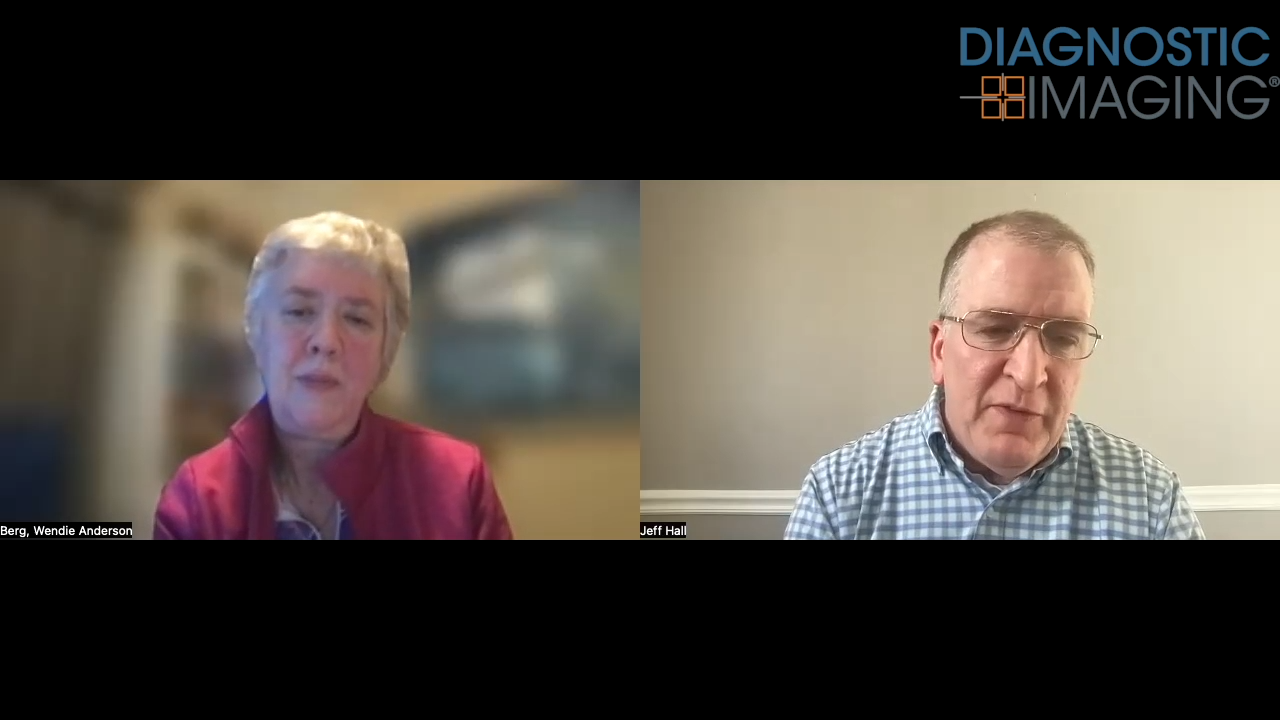Large Mammography Study Reaffirms Benefits of Digital Breast Tomosynthesis
In a recent video interview, Emily Conant, M.D., discussed findings from a large multicenter study highlighting the benefits of digital breast tomosynthesis (DBT) in breast cancer screening.
In a study involving over 2.5 million screening mammograms for over one million women, researchers found a significantly higher cancer detection rate and lower recall rate for digital breast tomosynthesis (DBT) in comparison to digital mammography (DM).
For the retrospective multicenter study, recently published in Radiology, researchers reviewed 2,528,063 screening mammograms for 1,100,447 women (mean age of 57). According to the study, 597,947 women had a total of 1,693,727 DBT screening exams and 502,500 women had a total of 834,336 DM screening exams.
The study authors found that DBT had a higher cancer detection rate (5.3/1000) in comparison to DM (4.5/1000) and a higher positive predictive value (5.9 percent vs. 4.3 percent). Researchers also noted a lower recall rate for DBT (8.9 percent vs. 10.3 percent for DM).
In a recent interview, Emily Conant, M.D., the lead author of the study, said the findings were similar to those noted in other studies of DBT but seeing the findings in a large, diverse multicenter cohort reaffirmed the advantages of DBT over two-dimensional (2D) mammography. She added that DBT also provides enhanced visualization for cancer detection in women with dense breasts.
“2D mammography, as we know, is very limited in (women with dense breasts) because the breast just appears white. That dense breast tissue obscures finding things,” noted Dr. Conant, the division chief of breast imaging and a professor of radiology at the Hospital of the University of Pennsylvania. “When you can scroll through these slices of reconstructed images of the breast, you can actually find things on (digital breast) tomosynthesis that you didn’t see on 2D mammography because it was just a white blizzard of breast density.”
(Editor’s note: For related content, see “Mammography Study Shows 22 Percent Higher Incidence of Dense Breasts in Women with a Family History of Breast Cancer,” “AI Improves Cancer Detection Rate for Digital Mammography and Digital Breast Tomosynthesis” and “FDA Issues Final Rule on National Breast Density Notification for Mammography Reports.”)
For more insights from Dr. Conant, watch the video below.
Contrast-Enhanced Mammography Study Reveals 24 Percent Lower Sensitivity with Moderate/Marked BPE
April 30th 2025In comparison to minimal or mild background parenchymal enhancement on contrast-enhanced mammography (CEM), researchers found that moderate or marked BPE was associated with a 12 percent lower AUC for breast cancer detection.
AI-Initiated Recalls After Screening Mammography Demonstrate Higher PPV for Breast Cancer
March 18th 2025While recalls initiated by one of two reviewing radiologists after screening mammography were nearly 10 percent higher than recalls initiated by an AI software, the AI-initiated recalls had an 85 percent higher positive predictive value for breast cancer, according to a new study.










